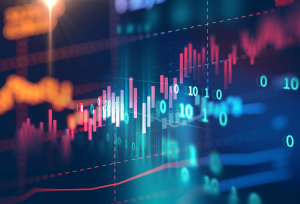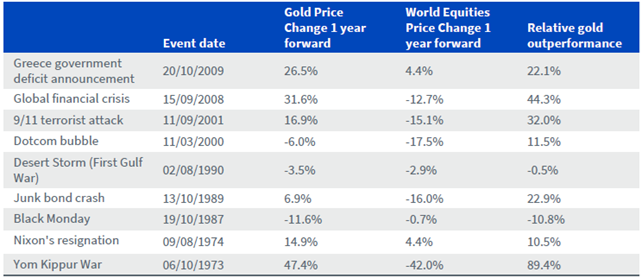
Marlène Hassine Konqui and Ahmed Khelifa, co-chairs of SFAF's ETF commission, draw their conclusions of 2023 and present their views on the risks that can influence portfolio construction, between inflation, geopolitics and armed conflicts.
The year 2023 was marked by surprising events, both economic and geopolitical. Unpredictable armed conflicts aside, the resilience of the US economy and China's long-awaited rebound - which failed to materialize - took most investors by surprise. While the consensus was for an economic slowdown, the US economy maintained its impressive trajectory, supported by a robust labor market and vigorous household consumption. This led to a challenging year for stock pickers, with a considerable gap between styles and factors. The result was the toughest market in history, with only 25% of stocks outperforming the S&P 500(1). Momentum is a perilous exercise for professional investors, especially in such a context.
Meanwhile, investors lured by high yields and the promise of falling rates found themselves confronted with borrowing costs that seemed destined to remain "higher for longer".
The year 2024 began with further macroeconomic surprises, notably for the US and Chinese economies, setting the tone for the rest of the year. The forces at play in 2023 persist, with two identifiable risks:
- High inflation: Identifying this risk is straightforward: resilient US consumption, driven by a robust labor market, combined with higher commodity prices due to protracted armed conflicts, could lead to higher inflation and, consequently, higher interest rates for an extended period.
- A boiling Cold War: The other identifiable risk is the expansion of armed conflict. China could seize the opportunity to attack Taiwan, given US involvement on several fronts. In addition, conflicts in the Middle East are beginning to have an impact on international trade, with attacks on cargo ships in the Red Sea(2).
What can we do?
In such an environment, betting on a single factor or a particular market could be riskier than usual. Investing in broad indices can reduce opportunity costs, and the transition from euphoria to disappointment could create opportunities.
However, some regions may prove more resilient, notably economies without high inflation and those able to secure oil from Russia and Iran at discounted rates, such as China and India. The Indian economy, less dependent on global demand, could prove more resilient than the Chinese.
India: a safe haven?
The Indian economy has several notable characteristics, not least its young demographics and, above all, its lesser integration into the global value chain and reduced dependence on global demand. As a result, the Indian stock market could serve as a safe haven for investors seeking respite from global economic challenges.
There is no alternative to equities (TINA) in Japan: inflation welcomed
While the rest of the world struggles to keep inflation under control, Japan has emerged from the confines of COVID-19 with accelerating growth and rising inflation. Japanese equities have exceeded expectations, rising 27.1% in the first half of 2023. This can be attributed to a combination of higher equity risk premiums, a weaker yen strengthening the Japanese export market, governance reforms and attractive valuations.
The Bank of Japan's accommodative monetary policy sets it apart from major central banks such as the Fed, ECB and BOE, all of which have raised interest rates. This policy divergence has been a key factor in the yen's depreciation. Japanese equities are benefiting from a weaker yen, relatively lower valuations and a long-awaited resurgence in inflation.
In conclusion, adopting a currency-hedged exposure to Japanese dividend stocks would be a prudent approach given the weaker yen. Historically, a weaker yen has boosted the performance of Japanese exporters, reinforcing their competitive edge.
Gold and geopolitics
Gold is considered a safe-haven asset, which means that during periods of economic uncertainty or heightened geopolitical risk, investors historically turn to this precious metal for protection, driving up its price. Gold can act as a form of portfolio insurance, helping to protect against declines during periods of market turmoil. A WisdomTree analysis shows that when geopolitical risk (GPR index) rises one standard deviation above its historical mean, the price of gold rises by an average of 9% year-on-year, while the S&P 500 stock market index falls by an average of 8.6% year-on-year during these months(3).
Gold's performance after financial and geopolitical events
Source: Bloomberg, WisdomTree, January 1971 to October 2023. Gold prices are based on Bloomberg spot prices and equities are based on the S&P 500 index. Historical performance is no indication of future performance, and any investment can lose value.
What if nothing goes wrong?
Identifying risks in the portfolio construction process is essential, but it doesn't mean that these risks will materialize. We need to take into account the possibility that everything could go well, and force ourselves to adopt an optimistic perspective when assessing what might happen in such a scenario. With inflation continuing to slow, monetary policy less restrictive and, therefore, risk appetite returning, cryptoassets could benefit from such a scenario, not least with the emergence of new financial products suitable for institutional investors.
(1) Source: "Equity outlook soft landing calls for tough choices", WisdomTree - October 2023.
(2) On this subject, see the article "Réalités Macroéconomiques : Des Conflits Armés à l'Inflation" of October 23, 2023 published on the BSD Investing website.
(3) On this subject, see the article "Portfolio Construction: When Uncertainty Feeds Gold" dated December 13, 2023 published on the BSD Investing website.
